Pachysandra is a low-maintenance, evergreen ground cover that spreads quickly. Its leaves are a lighter shade of green than most evergreens, and it blooms with sweet, subtle white flowers in early spring. It is deer and rabbit resistant and can survive a drought. Pachysandra thrives in partial to full shade, which makes it a great choice for underneath trees, along a foundation on the shady side of the house.
However, nonnative
Pachysandra terminalis, the most popular variety, has a dark side — it can take over woodlands and streambeds and is difficult to eradicate. Commonly known as Japanese spurge, this plant is considered an exotic invasive in some states. Years ago I would have recommended it for woodland edge gardens; however, due to its invasiveness, this is no longer a responsible use of this plant. I've spoken with a few experts to find out how to use Pachysandra in a responsible manner and how to avoid letting it invade delicate ecosystems.
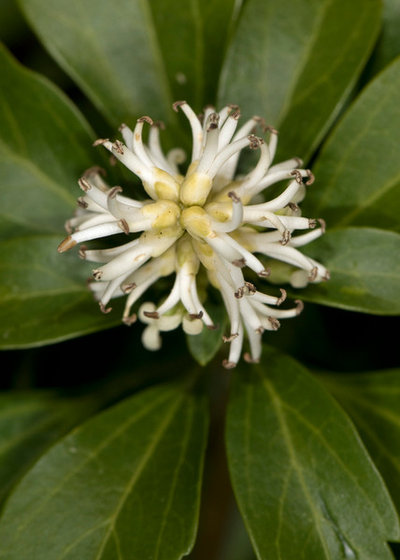
The New York Botanical Garden
Botanical name: Pachysandra terminalis and other varieties. This has been flagged as an aggressive spreader in some areas; check with your local nursery for the appropriate variety for your ecosystem — you don't want the plant to become invasive in an area beyond your garden.
Common names: Pachysandra, Japanese spurge
USDA zones: 5 to 8 (find your zone)
Water requirement: Moist soil is ideal, though it can survive drought
Light requirement: Partial to full shade.
Mature size: About 6 to 12 inches high and 12 inches wide
Benefits and tolerances: Tolerant of full shade, deer, rabbits, drought and clay soil; fills in large areas within a few years
Seasonal interest: This evergreen provides a lush green ground cover all year round and flowers in early spring.
When to plant: After the last frost in spring or in the fall
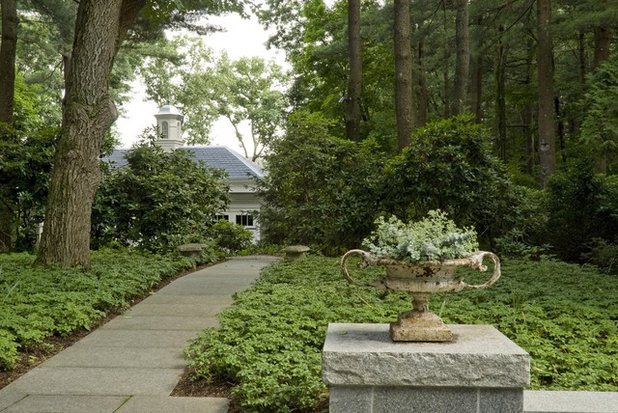
R. P. Marzilli & Company Landscape Contractor
Distinguishing traits. Pachysandra's ability to spread as an elegant ground cover and the fact that it is an evergreen make it a popular choice.
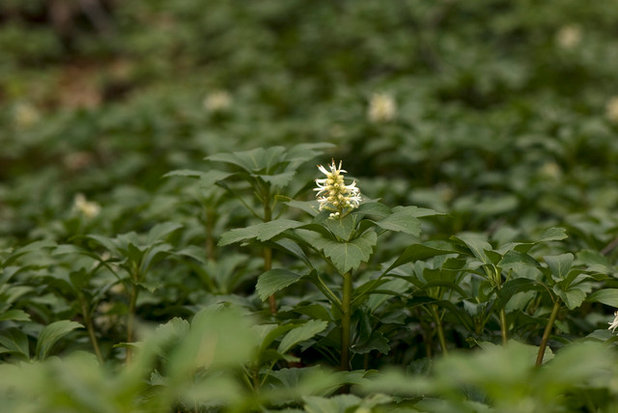
The New York Botanical Garden
Pachysandra is a member of the boxwood family; it's a coarser, wider-spreading, larger-leafed ground-covering cousin of English and American boxwood. By "coarse," I mean the leaves have somewhat jagged edges and aren't as glossy as boxwood's. It also blooms with spikes of white flowers in the spring.
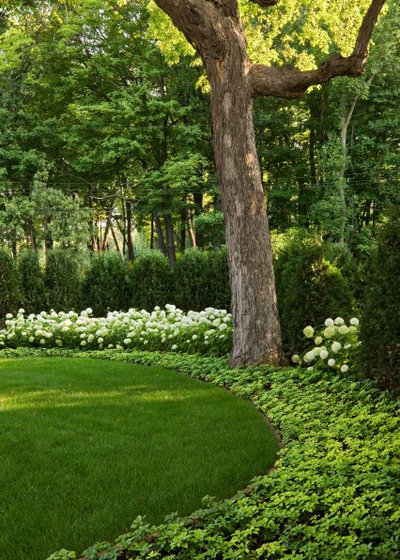
Windsor Companies
How to use it. Pachysandra is a great pick for a border garden. Its lighter green color also creates contrast next to hedges and evergreens.
I spoke with landscape architect Meg Arnosti of Windsor Companies about using Pachysandra responsibly. "Pachysandra is not considered to be invasive in Minnesota," she says, "and on the list of invasive plants from the USDA it is in the final category, 'Local Concern and Monitoring.' When we use it, it is always bound by edging to keep it in place. It spreads very slowly, and I have never experienced it growing out of bounds, nor have I heard complaints from my many gardener friends."
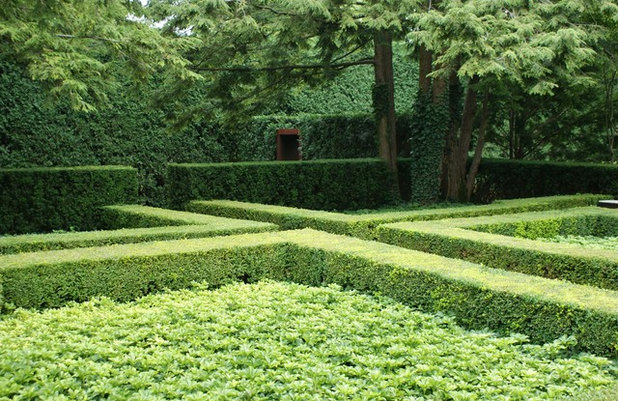
www.KarlGercens.com
Using Pachysandra to cover large areas is probably its most common use. But Pachysandra cannot take the trampling of feet or a hard raking, so don't plant it in an area you'll need to walk through. Remove any leaves using a very light touch with a rake. I can't bring myself to recommend a leaf blower, because I loathe blowers with the power of a thousand suns, but I have heard it recommended by others.
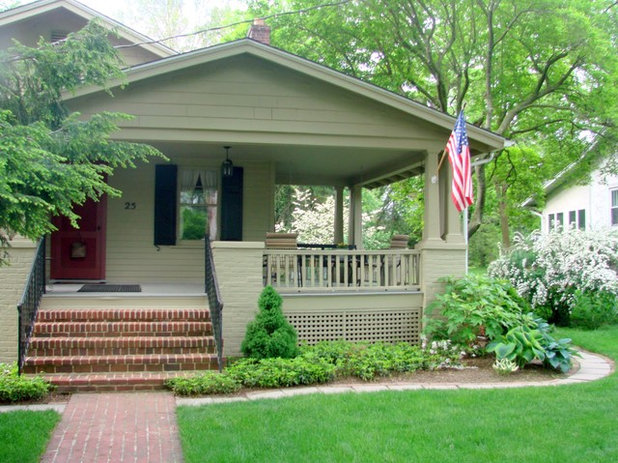
Pachysandra is a wonderful foundation planting, as you can plant it right up next to the house, yet it won't block access to the house like shrubs and trees do.
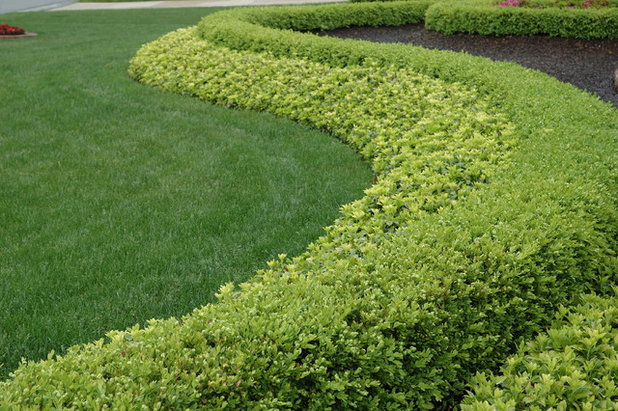
Land Architects, Inc.
Planting notes.- Soil should be moist and well drained; Pachysandra prefers acidic soils but can tolerate neutral and slightly alkaline soils.
- Edge the boundaries of the area where you are planting to prevent spreading.
- Place the plants about 8 inches apart. If you are anxious to get complete coverage right away, you may plant them closer together, but patience (that is, waiting a few years for them to get established) can save you a lot of money.
- Water the area and gently add a layer of mulch.
- Make sure the soil is moist and well drained.
- After a few years, you'll have a dense cover. Don't let it get too dense; thin the plants if necessary.
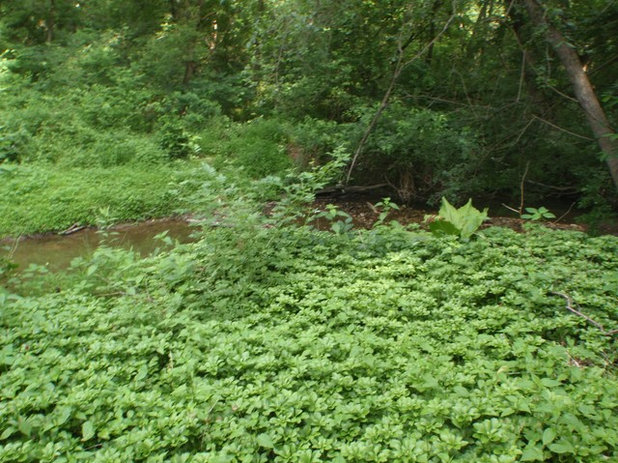 Planting don'ts.
Planting don'ts. I asked Chad Nelson, a horticultural expert and assistant professor of landscape design at the University of Delaware, about the ethics of using
Pachysandra terminalis. "In terms of how invasive Pachysandra is, I would consider it irresponsible to plant in the woods or along a streambank, but in small urban settings it isn't going to spread wildly, since it doesn't spread by windborn seed," he says.
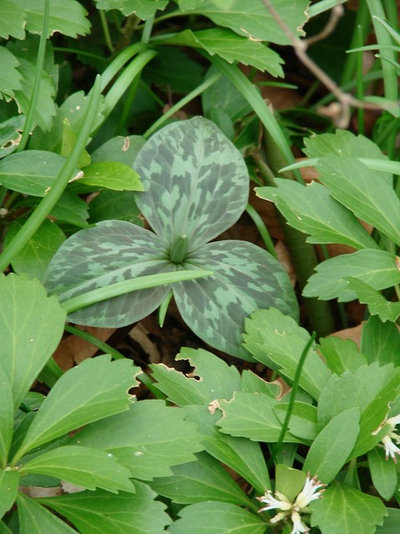
"The real problem is that it can tolerate deep shade, which a lot of other plants can't, so it can persist on woodland floors and slowly spread, smothering out all the nice little trilliums and Jack-in-the-pulpits," Nelson says. "But it's not as bad as English ivy, for sure."
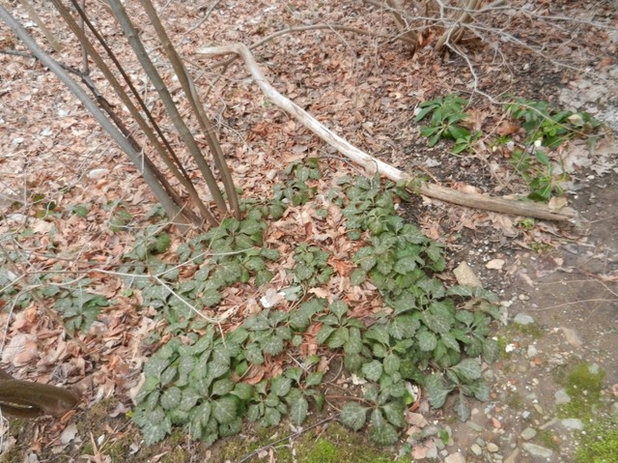
Nelson also recommends using the native species,
Pachysandra procumbens (common name: Allegheny spurge).
"Where
Pachysandra terminalis is evergreen and shiny and just a little bit plastic-y, the native
Pachysandra procumbens isn't quite evergreen, and its leaves are a little larger and duller, although I think that is a good thing," he says. "As the leaves emerge in the spring they are actually a brighter green, almost lime but not quite, then they mellow to the duller green with white blotches, and sometimes they turn burgundy in the winter."
When you have questions about planting nonnative plants, check with your local nursery and the U.S. Department of Agriculture's lists.





